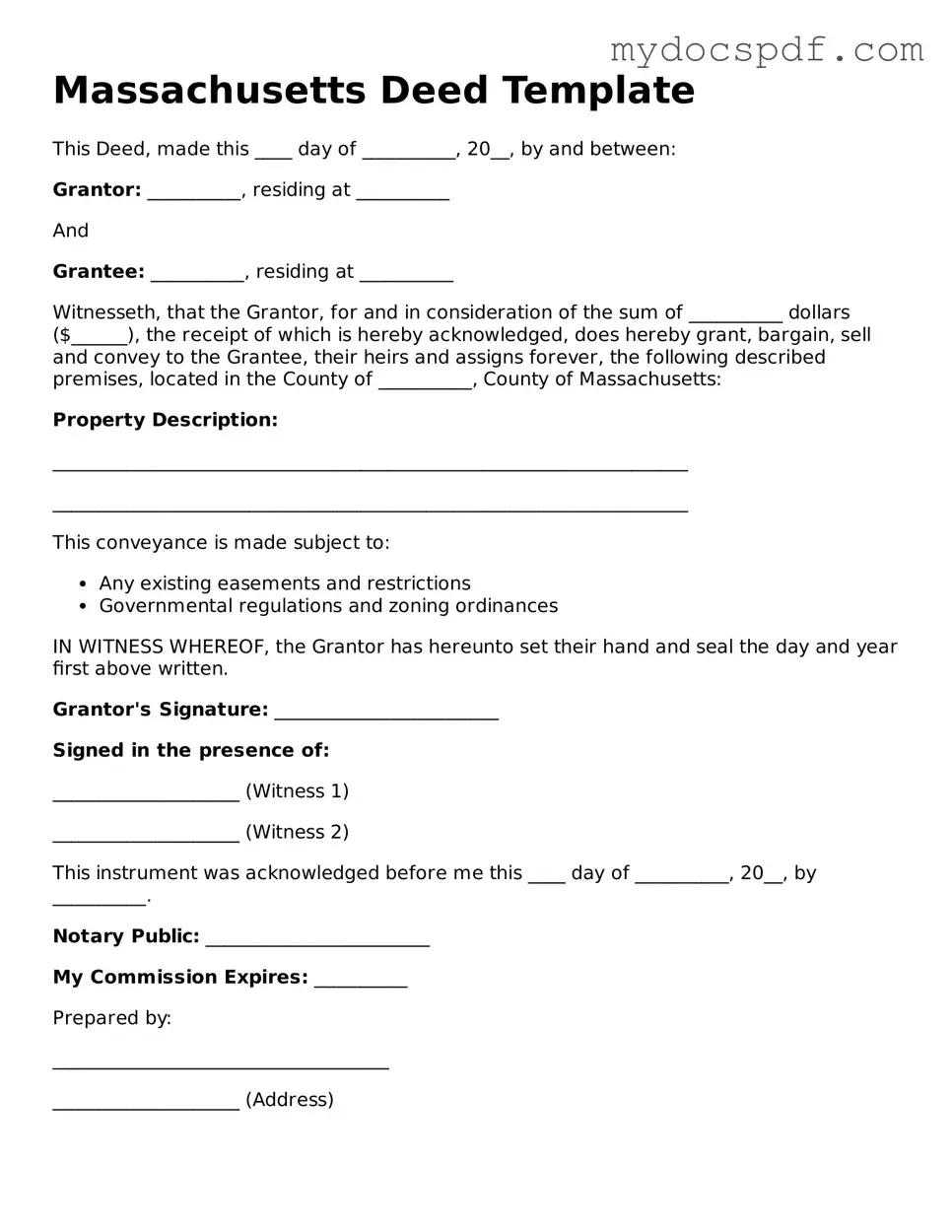Massachusetts Deed Template
This Deed, made this ____ day of __________, 20__, by and between:
Grantor: __________, residing at __________
And
Grantee: __________, residing at __________
Witnesseth, that the Grantor, for and in consideration of the sum of __________ dollars ($______), the receipt of which is hereby acknowledged, does hereby grant, bargain, sell and convey to the Grantee, their heirs and assigns forever, the following described premises, located in the County of __________, County of Massachusetts:
Property Description:
____________________________________________________________________
____________________________________________________________________
This conveyance is made subject to:
- Any existing easements and restrictions
- Governmental regulations and zoning ordinances
IN WITNESS WHEREOF, the Grantor has hereunto set their hand and seal the day and year first above written.
Grantor's Signature: ________________________
Signed in the presence of:
____________________ (Witness 1)
____________________ (Witness 2)
This instrument was acknowledged before me this ____ day of __________, 20__, by __________.
Notary Public: ________________________
My Commission Expires: __________
Prepared by:
____________________________________
____________________ (Address)
